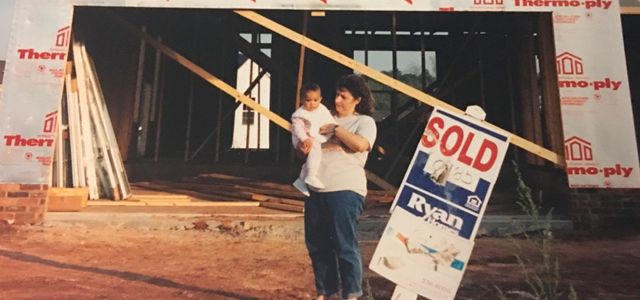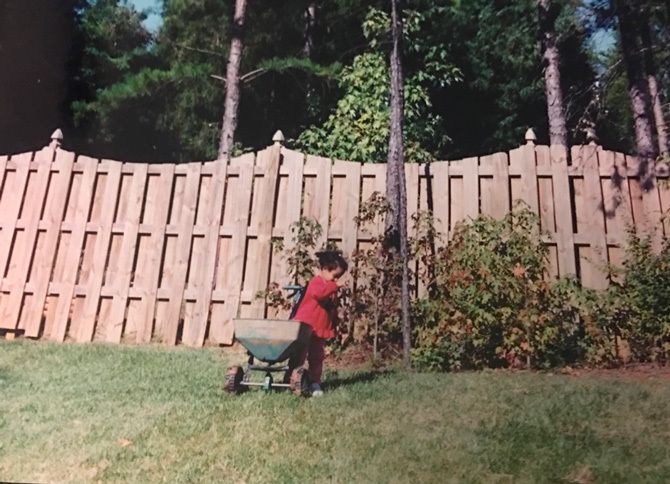By: Stephanie Watkins-Cruz

According to data from the National Coalition for the Homeless in 2009, “Two trends are largely responsible for the rise in homelessness over the past 20-25 years: a growing shortage of affordable rental housing and a simultaneous increase in poverty.”
Is the American Dream at risk? To mark the 20th anniversary of America’s Promise Alliance – and to support our campaign to encourage people, organizations, and communities to #Recommit2Kids – we asked our youth leaders to reflect on this question. This perspective is the second in a special series on the topic.
If you work hard and remain focused, you can prosper. That was the dream with which I was raised, the American Dream. And in many ways, this dream mirrored my reality. When I was growing up, my family and I lived in your typical single family home with a two car garage, backyard, dining room, kitchen, living room, and what now feels like an unnecessarily large foyer.
I wanted to someday have a bigger kitchen, a cool living room, and maybe some more furniture to fill up the dining room. I wanted four rooms instead of three, one for my parents when they would come live with me, and the remaining for my family. I had this dream until I was 10.
When we lost our home and moved into an apartment, a house was still my dream, but with it came the desire for this newly introduced concept of “financial stress” to be nonexistent in my future. I wanted a yard again. I wanted a big kitchen again. Even the foyer. But more than anything, I wanted the stress to be gone. I had this dream until I was 16.

My mother holding me at six months old, right before our house was finished in 1994. We lost the house in 2001. My parents remain unable to find affordable and stable housing to this day.
When we lost our apartment for the first time, and then the second, forcing us into a hotel, I found my American Dream reduced to an image that was based on need. I wanted another apartment. Didn’t care about the big kitchen, didn’t care about the foyer, or care if I would have my own room. The dream was a home. I still have this dream now.
These were my phases of dream reduction, and I fear that for too many Americans, the ideal of the American Dream has been replaced with a harsher image of American Need.
A Picture of American Needs: Shelter, Food, Healthcare
What does need look like?
In 2015, The National Alliance to End Homelessness reported that the number of people in poor households living doubled-up with family and friends has grown by 67 percent since 2007. That same year, almost 40,000 youth were homeless in just a single night. And despite the improvements in the unemployment rate, 4.8 million people remain in poverty, and the 15.8 percent poverty rate remains steady.
In 2013, the U.S. Department of Agriculture found that about 2.3 million people live more than one mile away from a supermarket, and they don’t own a car to help them get there. And a 2007 MIT study found that those who purchase groceries at small neighborhood stores pay between 3 and 37 percent more than they would if they lived closer to supermarkets.

Playing in the backyard at three years old, when I dreamed of having a house with four bedrooms and a bigger kitchen. I had this dream until I was 10, before my American Dream was replaced with American need.
Approximately 200,000 youth each year live permanently on the street – a life that is associated with multiple health problems.
If dreams are based off of reality, it’s hard to say the American Dream is alive and well when for some, reality gives them no basis nor foundation to think beyond meeting their basic needs.
So What Are We Supposed To Do?
In order to create a better America, one where every young person has a more equal chance to succeed, many things need to happen. To start, the United Sates could invest in the present and future of young people by investing in safe and affordable housing and expanding funding for rental assistance programs.
By expanding the funding for programs like the federal Housing Choice Voucher, HOME Investment Partnerships, and other HUD or USDA rental assistance programs, more vulnerable families could be reached and achieve household stability.
We should also invest and prioritize supportive services for families receiving rental assistance. Offering things like case management or free service coordination can help families navigate the complex web of needs that they and many other vulnerable individuals face.
Finally, we should invest in policy models that address multi-faceted issues facing youth. Collaboration and coordination of different programs that address multiple issues, or a policy like Housing First, can stretch resources so that they both have an impact and are used efficiently. Policies like these attack the root of the issue, and facilitate a path to address the issues that complicate or perpetuate things like poverty of homelessness in the first places.
Investment symbolizes commitment. And a commitment is what we must have.
We Have the Resources. Here’s What We Really Need.
Committing to youth means caring for every young person, no matter where they come from, what they need, and how much it might take to help. Every young person must mean every, single, young person.
In the book Invisible Nation: Homeless Families in America, journalist and documentary reporter Richard Schweid argues that America knows how, and has the capacity, to end family homelessness. We only have to commit to it.
To solidify his point, he begins the book with a quote by Rev. Dr. Martin Luther King Jr.: “There is nothing new about poverty. What is new is that we now have the techniques and the resources to get rid of poverty. The real question is whether we have the will.”
We have resources. So the question is, do we have the will?
Stephanie Watkins-Cruz is a Charlotte, North Carolina native and a youth board member at America’s Promise Alliance. She is currently pursuing a dual-degree student pursuing her Master’s in Public Administration and City and Regional Planning with a focus on affordable housing, and community economic development at UNC Chapel Hill.
Ready to #Recommit2Kids? Learn more here.
